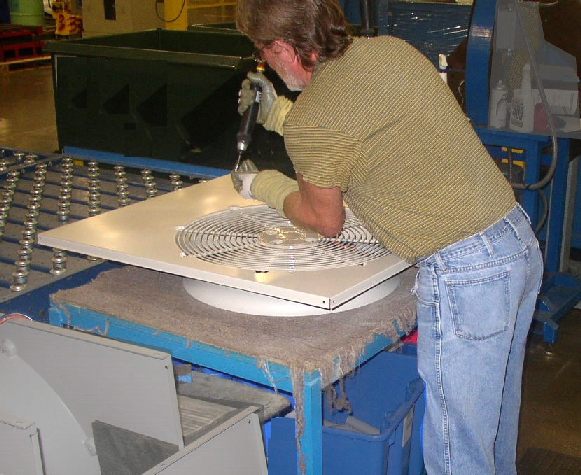 |
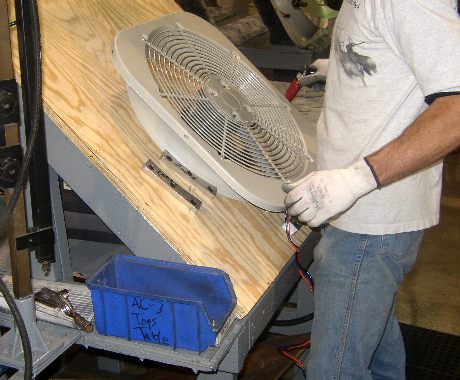 |
| Horizontal: More difficult to perform work, increased strain on back | Slanted: easier, faster, less strain on back |
Principles affected
Related pages
Workstations:
Background
A surprising amount of work can be done on slanted surfaces, which can provide several benefits:
- Better physical access, and thus better efficiency and quality
- Better visual access, i.e., ability to see the work
- Better working posture for employees – more strength and dexterity to do the work – less fatigue and strain on joints
Large flat objects, such as shown in the photos above, can be especially difficult to work on when done in a standard horizontal orientation. Because the center areas are hard to reach and hard to see, defects in these areas are common. Efficiency also drops because of difficulties doing the work while in an awkward position. Employees can experience fatigue and increased risk of back and shoulder injuries. At the same time, large flat objects are relatively easy to place on a slant.
Objectives
Design the workstation to put employee in optimal working position as much as possible, i.e. reduce bending and reaching.
Ideas and Options
Benchtop stands
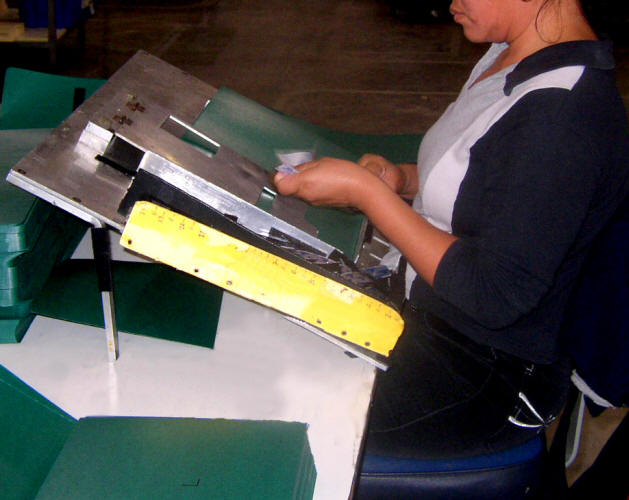 |
| Benchtop stand |
A slanted support can easily be fabricated in-house and placed on top of a normal bench. Small shelves and cups can be integrated into the slant to keep materials from rolling off.
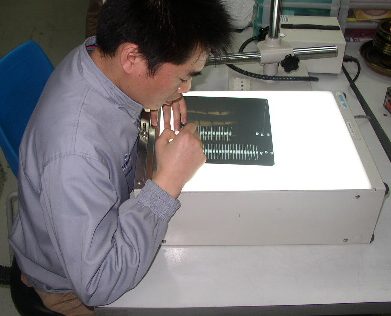 |
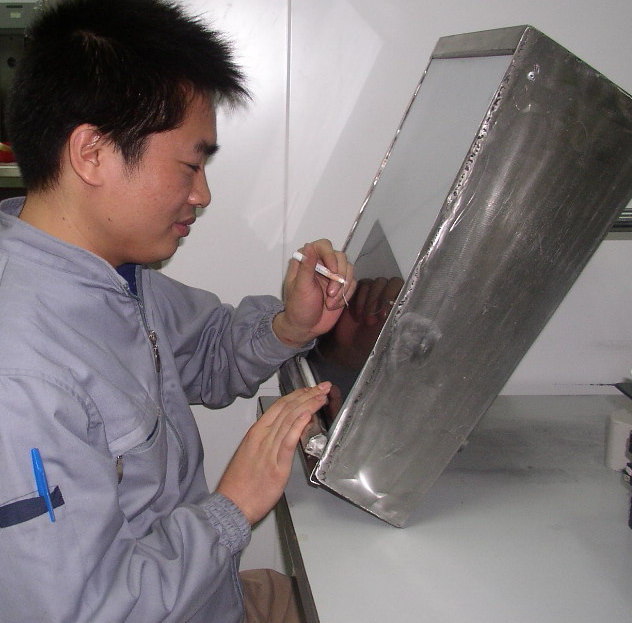 |
| Before: Light table flat | After: Tilted |
A special stand may not even be needed. In the case of this light table used to inspect x-rays of welds, it was possible to simply secure it do a microscope stand (visible in the background of the “before” photo). The initial motivation for making the change was in response to employee neck pain, but the change led to better ability to spot defects.
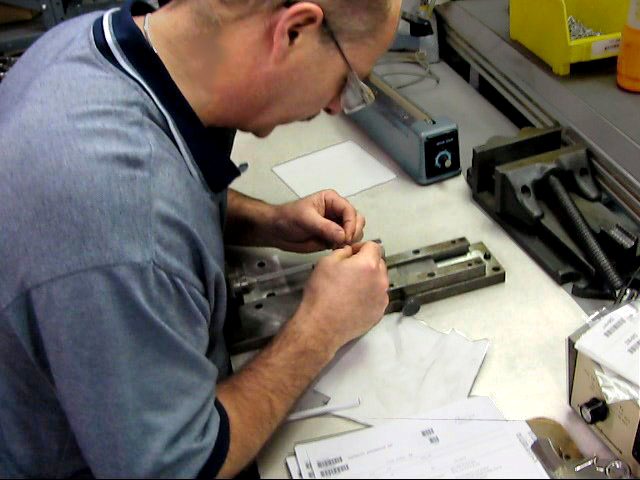 |
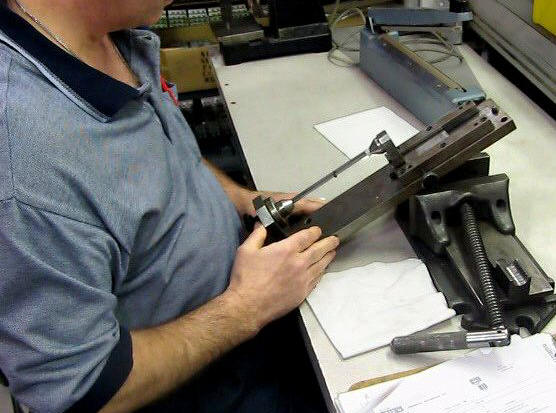 |
| Before | Quickfix: Lean on nearby object |
Slanting is a particularly easy technique to try, using using whatever odds and ends are at hand as supports. After some experimentation, a more substantial support or fixture can be obtained.
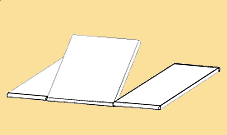 |
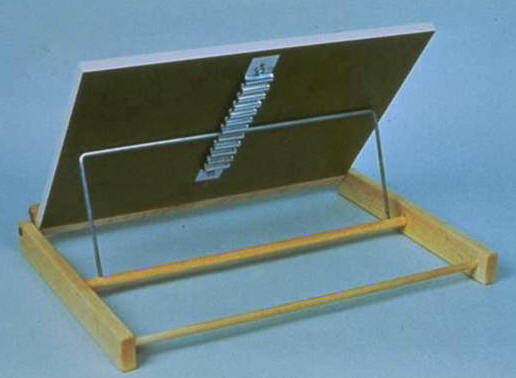 |
| Adjustable slant surface integrated into work surface (www.ergosource.com) | Heavy-duty copy holder |
Some off-the-shelf products are designed specifically for this purpose. Additionally, slanted writing surfaces and copy holders designed for an office setting can sometimes be used in industrial workstations.
Slanted workstations
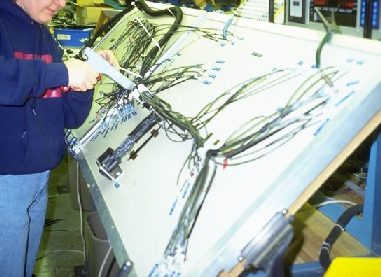 |
 |
| Harness board | Assembly workstation |
An alternative to using a slanted support on an existing horizontal bench is to configure the workstation on a slant. The traditional drafting table incorporated this feature. Harness boards for making cables are often positioned at a slant to reduce reaching and improve the employee’s working position. The photos at the top of the page provide another example.
Common pitfall — Many slanted workbenches are adjustable, but employees are unaware of the capabilities and/or what the proper adjustment should be. Safety talks need to be provided emphasizing (a) being conscious of working position, (b) objectives for optimal postures, (c) objectives for physical and visual access, and (d) how to adjust the equipment, including practice in doing so.
Slanted production lines
  |
|
| Before: Standard horizontal ham boning line | |
As with workstations, it is possible to slant entire production lines. The example here is a ham boning line. The photos above show a traditional horizontal line, using a moving belt conveyor. Note especially the bent neck and bent wrist. Some of the cuts are also difficult to make when the ham is flat like this.
 |
 |
| After: Tilted boning line | |
These photos show a tilted moving line for boning hams that uses cutting boards mounted on a chain conveyor (the cutting boards return underneath the line upside down, as with any belt conveyor). Note especially the following:
- Improvement in wrist posture (neck posture is improved too, although not shown in these photos).
- The simple swivel hook fixture, which prevents the ham from sliding down, plus reduces the amount of left hand exertion needed to flip the ham over to the other side.
- Ability to make certain cuts is improved by the slanted orientation
- Ability to use stronger grip position on knife (for this job)
Slanted machines and fixtures
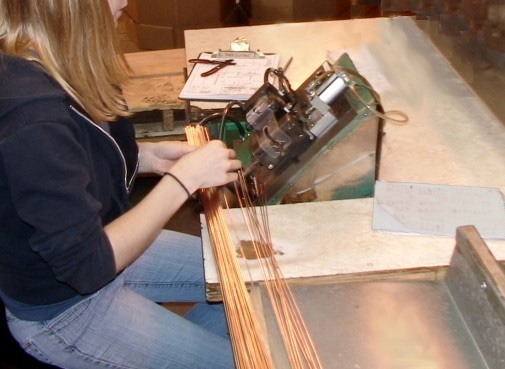 |
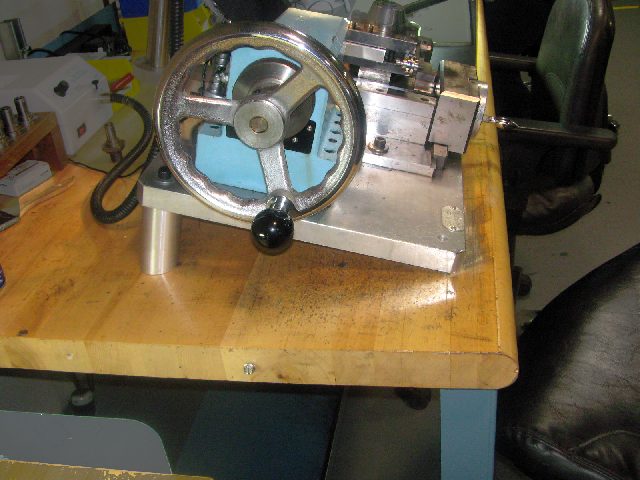 |
| Small machine integrated into bench at slant | Small machine on tilted support |
Many bench fixtures and free-standing fixtures can be designed or adjusted to present products at a slant. Simple benchtop supports for machines can be fabricated, plus some small machines can be integrated into the bench surface at a slant.
Reverse slant

Reverse slant
Depending upon the task and the product, the slant can go in whatever direction and amount that is needed. The slant above is set for placing an instruction label on the product.
Additional Examples
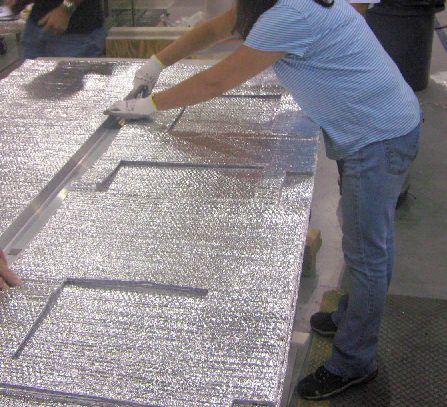 |
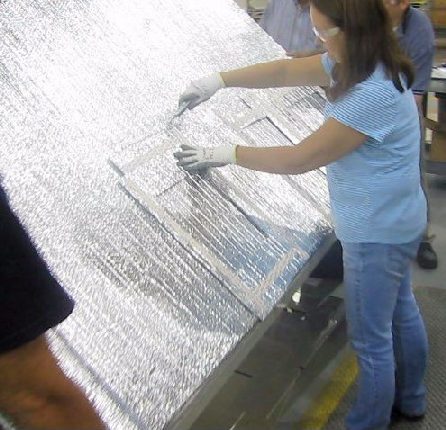 |
| Before | After |
It is not hard to imagine how much more difficult it is to perform the work (cutting insulation) on the horizontal surface compared to the slanted one. Similarly, the difference in strain on the back should be obvious.
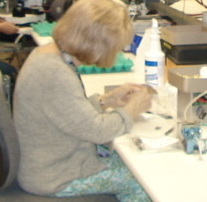 |
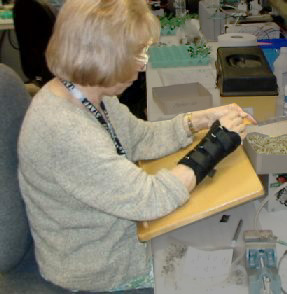 |
| Before | After |
In the “before” picture, the employee hunches over to see small items. Furthermore, her forearms rest on the edge of the bench, creating a pressure point. In the “after” picture, the slanted surface makes it easier to see the work, improves working posture, and provides a better support for the arm, spreading the pressure more evenly
 |
 |
| Wall mounted desk | |
Wall mounted desks can be used as temporary slanted surfaces, providing a vertical storage option in addition to the more standard horizontal approach.
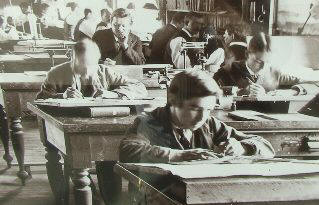 |
| Slanted benches —A tradition |
Slanted surfaces are certainly not a new idea. The photo above of the Tiffany jewelry studio in the early 1900s shows slanted surfaces. School desks and podiums are traditionally slanted.
